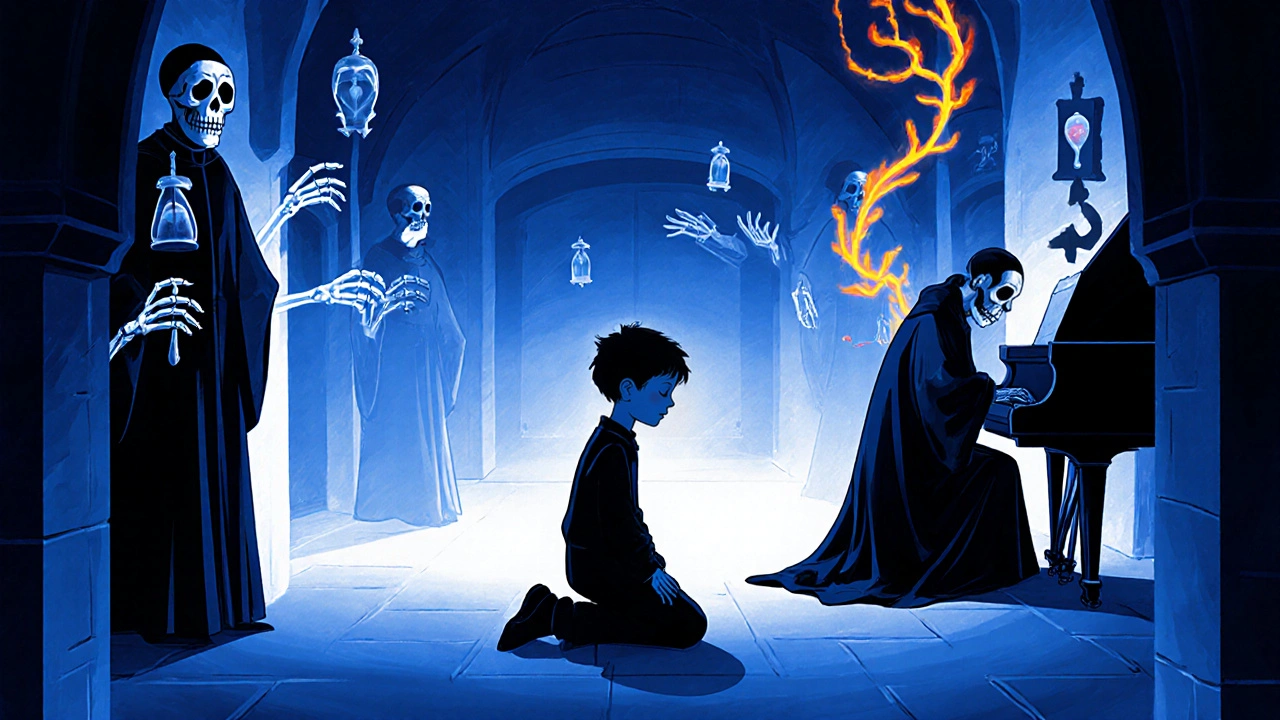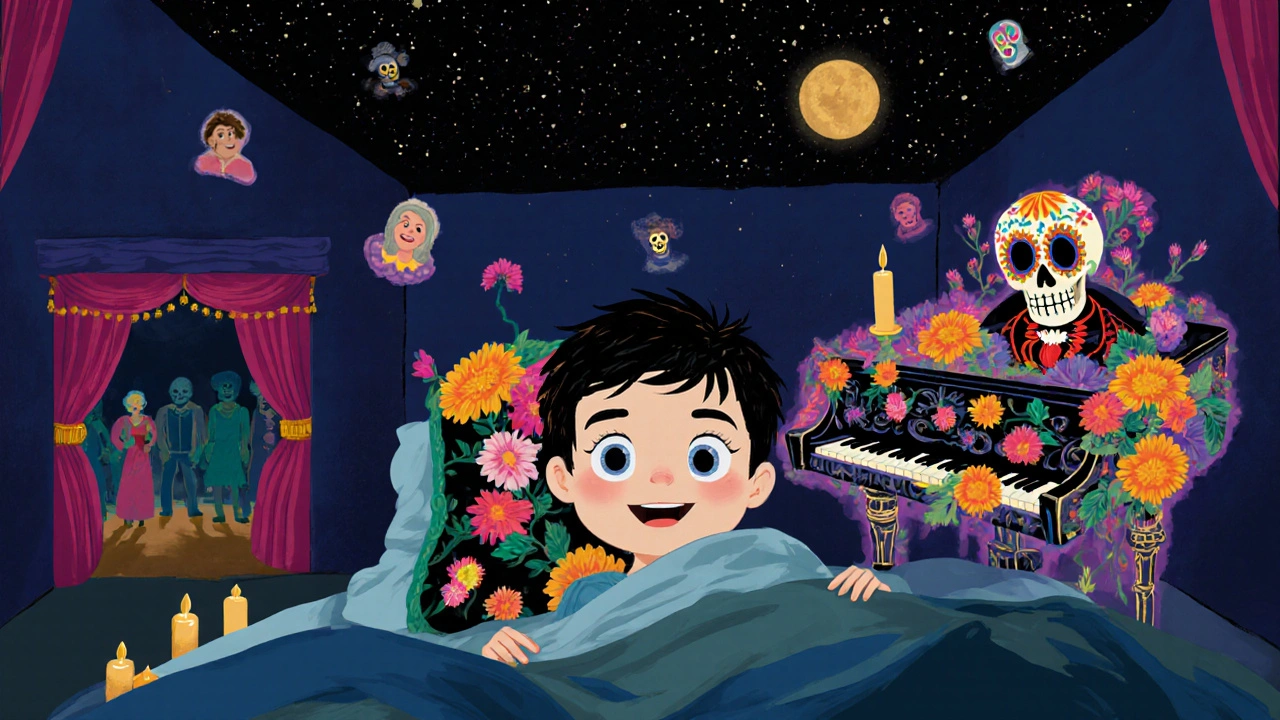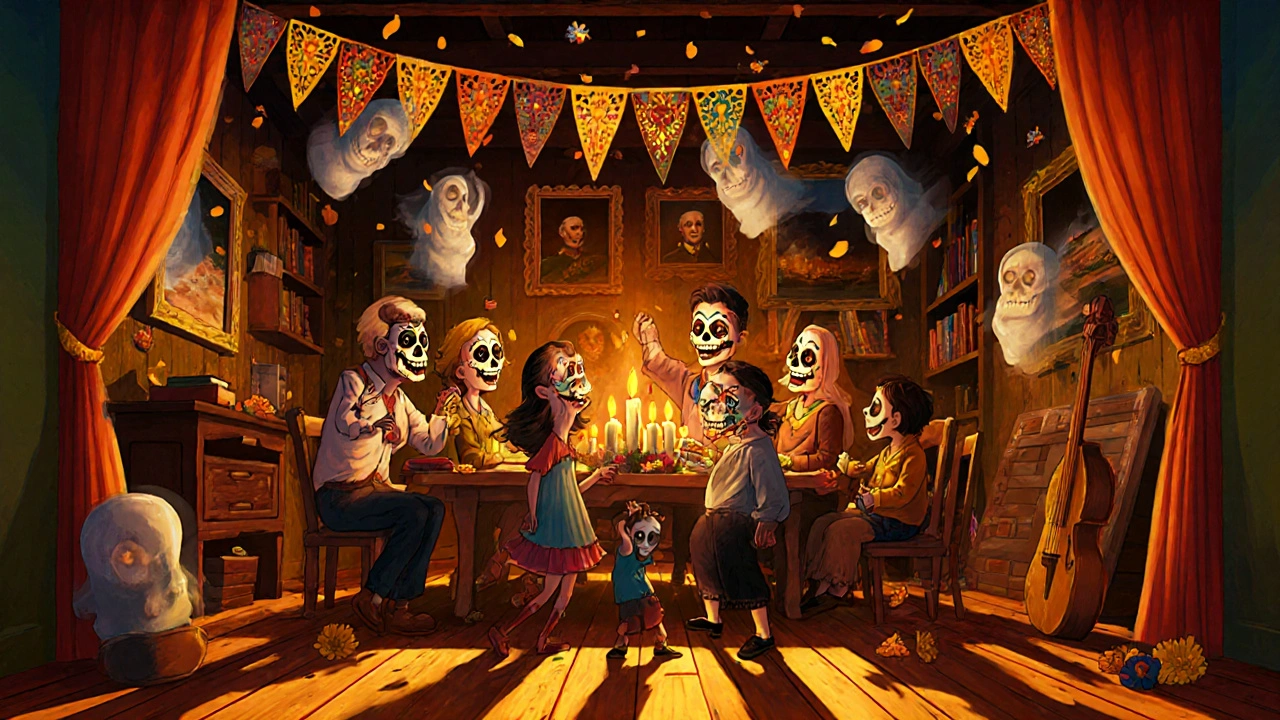Fanny and Alexander isn’t just a movie. It’s a world. A rich, breathing, aching world built from candlelight, church bells, whispered secrets, and the quiet terror of a child who sees ghosts no one else believes in. Released in 1982 as a five-hour TV miniseries and trimmed to three hours for theaters, Ingmar Bergman’s final major work before his brief retirement is more than a film-it’s a lifetime’s worth of memories, fears, and hopes poured onto celluloid. This isn’t a story about plot twists or villains. It’s about how a boy named Alexander learns to survive a world that tries to crush his imagination, and how a family holds itself together when everything falls apart.
The Ekdahl House: Where Magic Lives
Before the darkness comes, there’s light. Warm, golden, cluttered light. The Ekdahl home is a theater, yes-but it’s also a sanctuary. Paintings hang crooked. Books spill from shelves. Laughter echoes through halls. The air smells like pine resin, old velvet, and roasted chestnuts. This is where Fanny and Alexander grow up, surrounded by aunts who recite poetry, uncles who play the piano for no reason, and a grandmother who tells stories that blur the line between truth and spell. Bergman didn’t just film this house. He resurrected it. The sets at Filmstaden Studios covered 6,000 square meters. Every door creaked the same way in every scene. Every curtain was stitched to catch the light just right. The color temperature? 3,200K-warm, like firelight. This wasn’t decoration. It was emotional architecture. The Ekdahl home doesn’t just feel alive. It breathes. And when Alexander runs through its halls at night, you don’t just watch him-you feel the floorboards under your own feet.The Bishop’s House: Where Silence Kills
Then comes Bishop Edvard Vergerus. His house is the opposite of everything the Ekdahls represent. White walls. Cold floors. No laughter. No music. Just silence, and the occasional chime of a bell. The lighting here is 5,600K-blue, clinical, like a hospital. Bergman didn’t use shadows to create fear. He used light itself. Every corner of the bishop’s home feels exposed, judged, watched. Alexander is forced to kneel in prayer. His mother is made to wear black. His imagination is called sinful. His father’s ghost? A delusion. This isn’t just a stepfather. He’s a symbol. A man who believes God speaks only through rules, not through dreams. Bergman based Vergerus on his own father, Erik Bergman, a strict Lutheran minister who once locked young Ingmar in a dark closet for misbehaving. That childhood trauma didn’t vanish-it became the spine of this film. The bishop doesn’t shout. He doesn’t need to. His quietness is louder than any scream.Children See What Adults Refuse to Believe
Alexander isn’t just a child. He’s a seer. He sees his father’s ghost at the piano. He feels the presence of dead relatives in the walls. He talks to spirits who answer him. Other adults call it fantasy. The bishop calls it sin. But Bergman never tells us whether these visions are real-or just what a traumatized child needs to survive. And that’s the genius. The film doesn’t explain. It shows. Alexander draws pictures of his father. He hears bells when someone dies. He dreams of fire. These aren’t special effects. They’re psychological truths. In one unforgettable scene, he lies in bed, eyes wide, as the ghost of his father plays a Chopin nocturne. The camera doesn’t cut away. It holds. And you realize: Alexander isn’t hallucinating. He’s remembering. He’s holding on. And that’s the only magic that matters.
Art as Survival
Theater isn’t just a job for the Ekdahls. It’s their religion. When Alexander is locked in the bishop’s house, he doesn’t pray. He acts. He stages plays in his head. He becomes characters. He talks to the walls. He pretends he’s someone else-someone free. That’s how he endures. Art isn’t entertainment here. It’s resistance. It’s oxygen. Bergman, who spent his life making films about isolation and silence, knew this better than anyone. He didn’t make Fanny and Alexander to preach. He made it to say: when the world tries to silence you, create your own world. Write your own story. Play your own part. That’s how you live.The Christmas Sequence: A Feast for the Soul
One of the most talked-about parts of the film isn’t a climax. It’s a celebration. The Christmas scene in the full 312-minute version lasts 47 minutes. That’s longer than many entire movies. And it’s not just about presents or carols. It’s about belonging. The Ekdahls gather. They sing. They laugh. They eat. They argue. They cry. They hold each other. For once, there’s no bishop. No rules. Just warmth. And for a child who’s been starved of it, this is heaven. Critics called it excessive. But that’s the point. Bergman wanted you to feel the weight of that joy. To understand how rare it is. To feel what Alexander loses-and what he fights to get back.Why This Film Still Matters
It’s 2025. We live in a world of 90-second reels and algorithm-driven attention spans. So why does a three-hour black-and-white Swedish film from 1982 still have 8.3 out of 10 on IMDb? Because it doesn’t ask you to watch. It asks you to feel. It doesn’t explain trauma. It lets you live inside it. It doesn’t tell you what to believe. It shows you what it’s like to lose your faith-and find it again in art, in family, in memory. The film won four Oscars. It’s ranked #97 on Sight & Sound’s list of the greatest films ever made. It’s studied in Swedish high schools. It’s been restored in 4K. And still, people say it’s too long. Maybe. But some things can’t be rushed.
Watching It Today: The Full Version or the Cut?
You have a choice. The 188-minute theatrical cut is tight. It keeps the story moving. It’s perfect if you’re new to Bergman. But it’s like reading a summary of a novel. You get the plot. You miss the soul. The full 312-minute version? That’s the real thing. The candlelight lingers longer. The silence has more weight. The laughter echoes deeper. The ghosts stay longer. And you feel, truly feel, what Alexander feels. If you have the time-and the patience-watch the full version. On a big screen, if you can. With good speakers. In the dark. Let the film breathe. Let it haunt you.What People Say About It
Roger Ebert called it “Bergman’s most detailed and specific work, and therefore one of the most universal.” A Reddit user wrote: “The scene where Alexander sees his father’s ghost made me sob uncontrollably. It’s the perfect expression of childhood grief.” A 2023 MoMA restoration revealed 1,247 instances of color fading. They fixed them all. Why? Because the film still matters. Because someone, somewhere, still needs to see it.Final Thought: A Film That Doesn’t End
Fanny and Alexander doesn’t end when the credits roll. It ends when you close your eyes. When you remember the smell of pine. The sound of bells. The warmth of a hand holding yours. The ghost of someone you loved, still playing piano in the dark. Bergman didn’t make a movie about a family. He made a mirror. And if you let it, it will show you your own.Is Fanny and Alexander based on a true story?
Yes, in large part. Ingmar Bergman described the film as his most personal work, drawing directly from his childhood in Uppsala, Sweden. The character of Alexander mirrors Bergman himself, and the oppressive Bishop Edvard Vergerus is based on his own father, Erik Bergman, a strict Lutheran minister. The Ekdahl family’s theatrical world reflects Bergman’s early exposure to theater through his father’s church and his own childhood fascination with performance. While names and events are fictionalized, the emotional truths-fear of religious authority, the comfort of family, the power of imagination-are deeply autobiographical.
Should I watch the TV version or the theatrical cut?
If you’re new to the film, start with the 188-minute theatrical version. It’s tightly structured and retains all the key emotional beats. But if you have the time, the 312-minute TV version is Bergman’s true vision. It adds nearly two hours of character moments, quieter scenes, and extended family interactions that deepen the emotional impact. The Christmas sequence alone, which runs 47 minutes in the full version, is essential for understanding the contrast between freedom and repression. The Criterion Collection’s Blu-ray includes both versions with commentary from Bergman himself.
Why is the lighting so different in the two homes?
Cinematographer Sven Nykvist used lighting as a psychological tool. The Ekdahl home is lit at 3,200K-warm, golden, like candlelight-creating a sense of comfort, intimacy, and magic. The bishop’s house uses 5,600K, a cold, daylight-blue tone that feels sterile, clinical, and hostile. This isn’t just aesthetic. It’s emotional coding. The warmth represents creativity, freedom, and family. The cold represents control, repression, and fear. Bergman and Nykvist designed every shadow and highlight to reflect the inner world of the children.
What makes Fanny and Alexander different from Bergman’s other films?
Bergman’s earlier films like Persona and Cries and Whispers are stark, psychological, and often bleak. Fanny and Alexander is his most colorful, expansive, and emotionally generous film. It includes fantasy, humor, music, and family warmth-elements he rarely embraced before. While his past work focused on isolation and silence, this film is about connection. It’s also his longest, most narrative-driven, and most accessible work. Many critics call it his “summa”-a final synthesis of all his themes: faith, art, childhood, memory, and the supernatural.
Is Fanny and Alexander too slow for modern viewers?
Some viewers find the pacing deliberate, even slow-especially during long dialogues or quiet moments. But that’s intentional. Bergman wanted you to sit with the silence, to feel the weight of each pause. The film rewards patience. The most powerful moments aren’t loud-they’re quiet: a child’s gaze, a hand on a shoulder, the echo of a bell. If you’re used to fast cuts and constant action, it may take a few scenes to adjust. But once you let go of expectations, the film becomes immersive. It’s not about what happens next. It’s about how it feels to be there.


